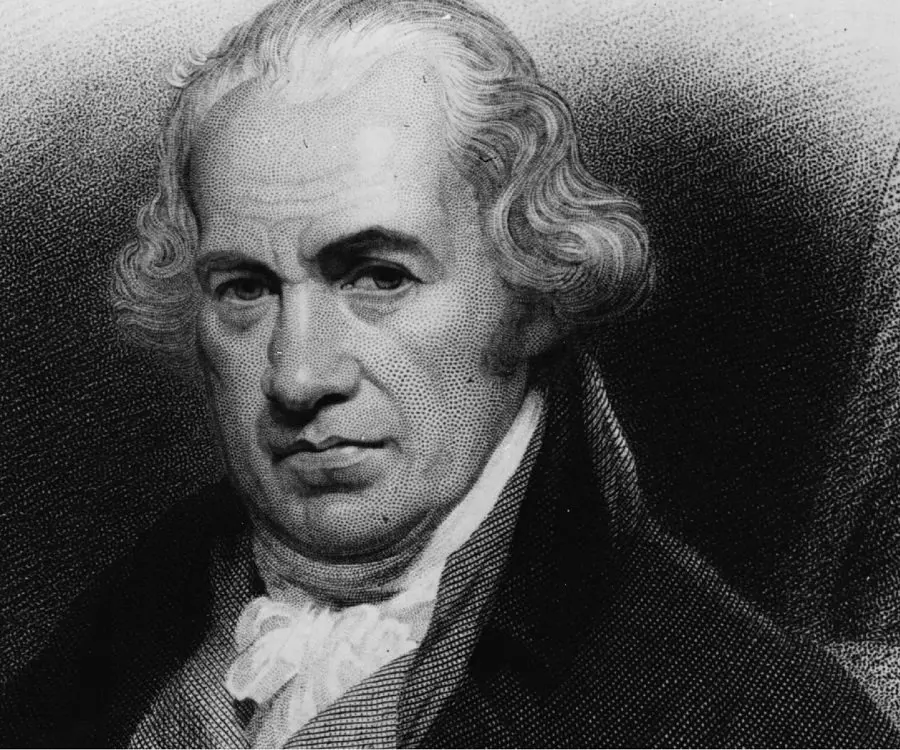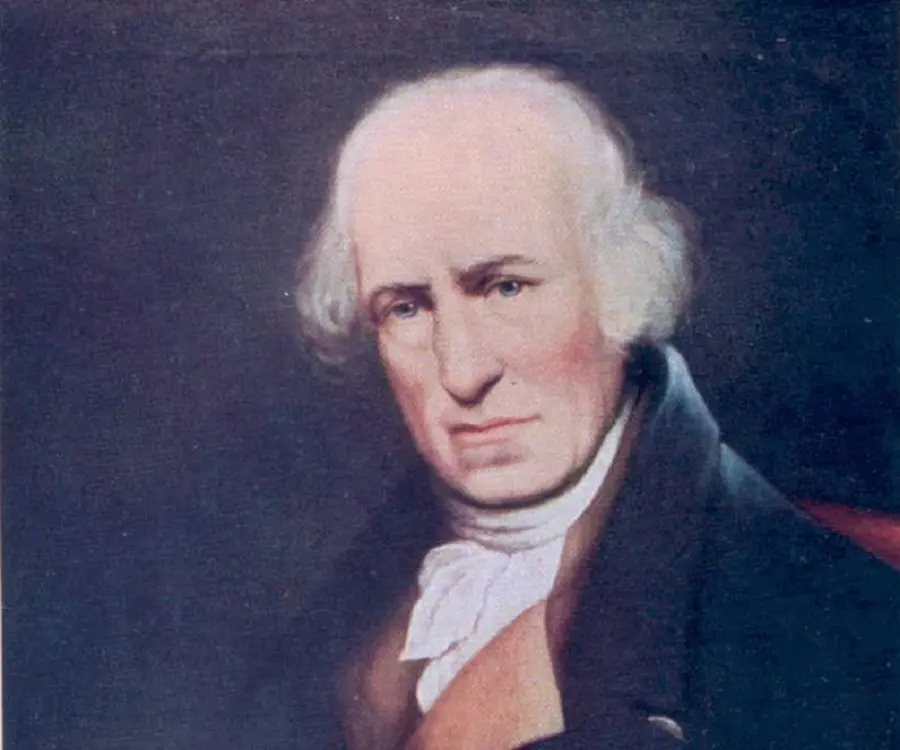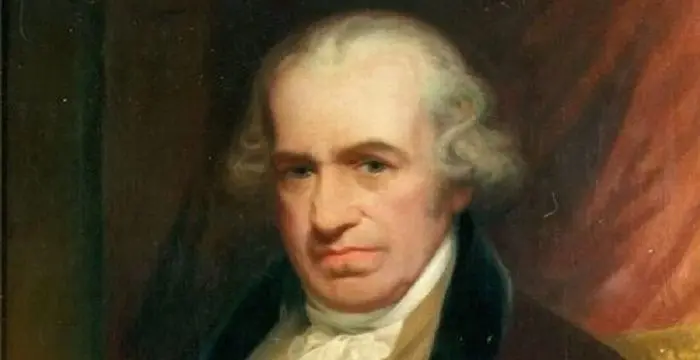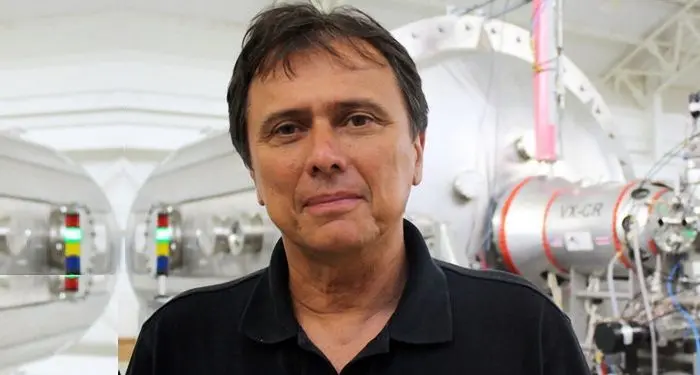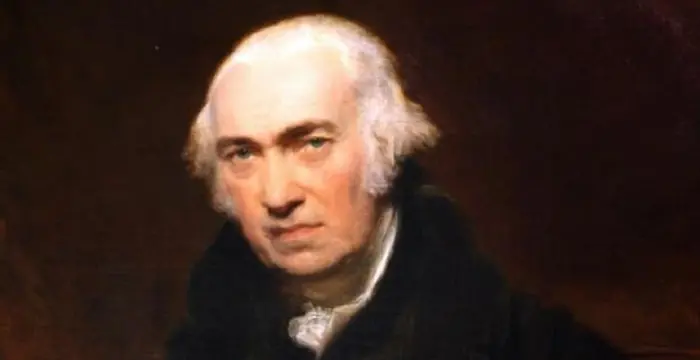
James Watt - Inventor of Steam Engine, Timeline and Family
James Watt's Personal Details
James Watt was a Scottish engineer and instrument maker, who is known for his invention of the first modern steam engine
| Information | Detail |
|---|---|
| Birthday | January 19, 1736 |
| Died on | August 25, 1819 |
| Nationality | Scottish |
| Famous | Mechanical Engineers, Inventors & Discoverers, Scientists, Inventor of Steam Engine |
| Spouses | Ann Macgregor (1777-1819), Margaret Miller (1764–1772) |
| Discoveries / Inventions |
|
| Birth Place | Greenock, Renfrewshire, Scotland |
| Gender | Male |
| Sun Sign | Capricorn |
| Born in | Greenock, Renfrewshire, Scotland |
| Famous as | Inventor of Steam Engine |
| Died at Age | 83 |
James Watt's photo
Who is James Watt?
James Watt was a Scottish engineer and instrument maker, who is known for his invention of the first modern steam engine. He modified the Newcomen steam engine to increase its efficiency through his creative thinking and scientific knowledge of instrument design. He learned writing, arithmetic and geometry in his childhood along with the craft of instrument making, which he later pursued as a career to achieve great heights. One of his greatest strengths was that he was a quick learner, which transformed him from an apprentice to a skilled professional in very less time as compared to other people. He faced a lot of poverty as he was vastly in debt and was not allowed to work as a professional initially. Eventually, he became a successful and famous inventor through some of his finest works including the steam engine, rotary engine and copying system. His vast knowledge of mechanical engineering, leading the way for the future generations, also symbolized his mark in history as one of the most celebrated scientists of all time. He also developed the concept of ‘Horsepower’ and the S.I. unit of power, Watt, is named after him. He was married twice and had seven children, but unfortunately only one of his children lived beyond the age of 30.
// Famous Inventors & Discoverers
Nikola Tesla
Nikola Tesla was a Serbian-American inventor, best known for his development of alternating current electrical systems. This biography of Nikola Tesla provides detailed information about his childhood, life, achievements, works & timeline.
Thomas Newcomen
Thomas Newcomen was a British inventor who developed the world’s first steam engine. Browse through this biography to learn in details about his life, career, works and timeline.
Erno Rubik
The famous inventor and educationist, Erno Rubik is known world-wide for his invention the ‘Rubik’s Cube’. To know more about the childhood, profile, timeline and career of this famous architect-inventor read on.
Childhood & Early Life
James was born on 19 January, 1736 in Greenock, Renfrewshire to Agnes Muirhead, a well educated women and her husband, James Watt, who was a shipwright and contractor with a well established business. He had a brother, John, who died at an early age.
He was not a healthy child and suffered from toothaches and migraines in his childhood. Due to this medical condition, he was unable to attend school regularly and was mostly taught at home by his parents.
His mother taught him reading while his father taught him arithmetic and writing. He loved to operate on a small toolkit in his father’s workshop, assembling different objects for designing various models. In this way, he was attracted to the skill of crafting instruments.
During his teenage years his father lost his inheritance due to commercial disasters and his mother died. In the mean time, he decided to pursue a career in mathematical instrument making.
Career
In 1754, he went to Glasgow and got acquainted with Robert Dick through one of his relatives working at Glasgow University. Robert encouraged him to master the skill of instrument making by working as an apprentice in London.
In 1755, he met John Morgan, an instrument maker who agreed to teach him the art of instrument making with a little pay. He worked for long hours continuously in the cold workshop, due to which his health declined. His abilities surpassed John’s other apprentices and he was able to complete his tenure in one year, which normally extended up to seven years.
After his training, he returned to Glasgow in 1756 to start his own business of mathematical instrument making, but faced opposition from local tradesmen as he was an outsider to them after being trained in London. They shunned his credentials and training.
In 1757, with the help of his friends at the Glasgow University he opened a shop in the university campus and was appointed as the “Mathematical Instrument Maker to the University”. He was made in-charge of the new astronomical instruments which required special attention.
In 1758, while he used to study and repair scientific instruments at the university, he became friends with some of its professors. In addition to that he formed a partnership with John Craig, a businessman who helped him to open a shop in Glasgow and sell musical instruments.
In 1763, the most crucial moment of his life arrived, when a professor brought his attention to a Newcomen steam engine that was not working properly. This challenged his creativity and scientific knowledge, and he set upon finding a solution for it through his instrument making skills.
After a study of two years, in 1765 he devised a unique way to modify the engine to improve its working which led to the invention of the steam engine. To this day, it is considered as one of the greatest achievements of all times.
Over the years he improved the working of steam engine through his revolutionary ideas and inventive thinking. He also developed a copying machine and patented his discoveries with the help of his partner Matthew Boulton, an industrialist and a visionary.
Major Works
From 1763 to 1765, he investigated the Newcomen engine and found loopholes in it, which were needed to be rectified for its proper working. He suggested a separate condenser connected with the engine, his first and greatest invention, where the steam from the engine would be collected for condensation. It would prevent the loss of latent heat and increase its working efficiency.
In 1768, he entered into a partnership with John Roebuck, who urged him to make a steam engine which he did. The following year Watt took out the famous patent for “A New Invented Method of Lessening the Consumption of Steam and Fuel in Fire Engines.”
From 1780 to 1790, he invented numerous techniques to improve the working of steam engine and patented them. This includes rotary motion, double acting engine, parallel motion and invention of pressure gauge.
Awards & Achievements
In 1784, he was elected as a member of the Royal Society of Edinburgh.
In 1787, he was elected as a member of the Batavian Society for Experimental Philosophy in Rotterdam.
In 1806, he was conferred the honorary Doctor of Laws by the University of Glasgow.
In 1960, the 11th General Conference on Weights and Measures incorporated ‘watt’ as the unit of power in International System of Units.
Personal Life & Legacy
In 1764, he married his cousin Margaret Miller, with whom he had five children, but only one of them lived beyond the age of 30. His wife died in childbirth in 1772.
In 1777, he was remarried to Ann Macgregor, daughter of a Glasgow dye-maker. They had two children, who also died at young ages..
After his retirement in 1800, he traveled to France and Germany with his second wife. He also revisited his hometown of Greenock in 1816.
He died on 25 August, 1819 at his house in England, at the age of 83.
Trivia
He once quoted that “he would rather face a loaded cannon than settle an account or make a bargain”, which establishes the fact that he was not a businessman, but an inventor.
This great inventor’s name is marked on every light bulb around the world.
// Famous Mechanical Engineers
Nikola Tesla
Nikola Tesla was a Serbian-American inventor, best known for his development of alternating current electrical systems. This biography of Nikola Tesla provides detailed information about his childhood, life, achievements, works & timeline.
Kitaw Ejigu
Kitaw Ejigu was an Ethiopian American engineer and political leader. This biography of Kitaw Ejigu provides detailed information about his childhood, life, achievements, works & timeline.
Franklin Chang Díaz
Franklin Chang-Diaz is an American-Costa Rican physicist and former NASA astronaut. This biography profiles his childhood, life, career, achievements and timeline.
James Watt biography timelines
- // 19th Jan 1736James was born on 19 January, 1736 in Greenock, Renfrewshire to Agnes Muirhead, a well educated women and her husband, James Watt, who was a shipwright and contractor with a well established business. He had a brother, John, who died at an early age.
- // 1754In 1754, he went to Glasgow and got acquainted with Robert Dick through one of his relatives working at Glasgow University. Robert encouraged him to master the skill of instrument making by working as an apprentice in London.
- // 1755In 1755, he met John Morgan, an instrument maker who agreed to teach him the art of instrument making with a little pay. He worked for long hours continuously in the cold workshop, due to which his health declined. His abilities surpassed John’s other apprentices and he was able to complete his tenure in one year, which normally extended up to seven years.
- // 1756After his training, he returned to Glasgow in 1756 to start his own business of mathematical instrument making, but faced opposition from local tradesmen as he was an outsider to them after being trained in London. They shunned his credentials and training.
- // 1757In 1757, with the help of his friends at the Glasgow University he opened a shop in the university campus and was appointed as the “Mathematical Instrument Maker to the University”. He was made in-charge of the new astronomical instruments which required special attention.
- // 1758In 1758, while he used to study and repair scientific instruments at the university, he became friends with some of its professors. In addition to that he formed a partnership with John Craig, a businessman who helped him to open a shop in Glasgow and sell musical instruments.
- // 1763In 1763, the most crucial moment of his life arrived, when a professor brought his attention to a Newcomen steam engine that was not working properly. This challenged his creativity and scientific knowledge, and he set upon finding a solution for it through his instrument making skills.
- // 1764In 1764, he married his cousin Margaret Miller, with whom he had five children, but only one of them lived beyond the age of 30. His wife died in childbirth in 1772.
- // 1765After a study of two years, in 1765 he devised a unique way to modify the engine to improve its working which led to the invention of the steam engine. To this day, it is considered as one of the greatest achievements of all times.
- // 1777In 1777, he was remarried to Ann Macgregor, daughter of a Glasgow dye-maker. They had two children, who also died at young ages..
- // 1780 To 1790From 1780 to 1790, he invented numerous techniques to improve the working of steam engine and patented them. This includes rotary motion, double acting engine, parallel motion and invention of pressure gauge.
- // 1784In 1784, he was elected as a member of the Royal Society of Edinburgh.
- // 1787In 1787, he was elected as a member of the Batavian Society for Experimental Philosophy in Rotterdam.
- // 1806In 1806, he was conferred the honorary Doctor of Laws by the University of Glasgow.
- // 25th Aug 1819He died on 25 August, 1819 at his house in England, at the age of 83.
// Famous Scientists
Juliane Koepcke
Juliane Koepcke is a German-Peruvian biologist, who was the lone survivor among the 92 passengers and crew of the ill-fated LANSA Flight 508 that crashed in the Peruvian rainforest on 24 December 1971. Know more about her life in this biography.
Henry Cavendish
Henry Cavendish was a theoretical chemist and physicist, renowned for discovery of hydrogen and calculation of the mass of earth. To know more about his childhood, profile, timeline and career read on
Konstantin Tsiolkovsky
Konstantin Tsiolkovsky was a Russian rocket scientist and a pioneer of astronautics. This biography provides detailed information about his childhood, family, personal life, career, achievements, etc.
Gabe Newell
Gabe Newell is an American computer programmer and businessman, best known as the co-founder of ‘Valve Corporation.’ This biography provides detailed information about his childhood, family, personal life, career, etc.
Grigori Perelman
Grigori Perelman is a Russian mathematician who is best known for his contributions to Riemannian geometry and geometric topology. Check out this biography to know about his childhood, family life, achievements and fun facts about him.
Eduardo Saverin
Eduardo Luiz Saverin is a Brazilian internet entrepreneur and investor. This biography profiles his childhood, life, career, achievements, and timeline
James Watt's FAQ
What is James Watt birthday?
James Watt was born at 1736-01-19
When was James Watt died?
James Watt was died at 1819-08-25
Where was James Watt died?
James Watt was died in Birmingham, England
Which age was James Watt died?
James Watt was died at age 83
Where is James Watt's birth place?
James Watt was born in Greenock, Renfrewshire, Scotland
What is James Watt nationalities?
James Watt's nationalities is Scottish
Who is James Watt spouses?
James Watt's spouses is Ann Macgregor (1777-1819), Margaret Miller (1764–1772)
What is James Watt's inventions/discoveries?
Steam Engine, Concept Of Horsepower was invented (or discovered) by James Watt
What is James Watt's sun sign?
James Watt is Capricorn
How famous is James Watt?
James Watt is famouse as Inventor of Steam Engine

